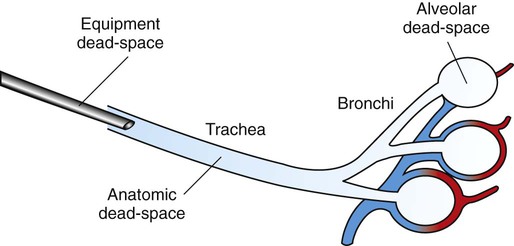

Physiological dead space remains a fairly constant fraction of the tidal volume over a wide range of tidal volumes.

Today it is universally defined by the Bohr mixing equation with substitution of arterial P co 2 for alveolar P co 2 as described later. Physiological dead space is the sum of all parts of the tidal volume that do not participate in gaseous exchange. Specific therapies are available for most of the underlying etiologies for example, excessive extrinsic PEEP should lead to lower applied PEEP, excessive intrinsic PEEP can be managed with bronchodilation and permissive hypercapnia, low cardiac output with inotropes, hypovolemia with crystalloid resuscitation, and pulmonary embolism with anticoagulation.Īndrew B Lumb MB BS FRCA, in Nunn's Applied Respiratory Physiology (Eighth Edition), 2017 Physiological Dead Space We believe that elevations in pulmonary dead space should prompt a search for an underlying etiology. In addition, because PEEP requirements are highly variable, excessive PEEP may have contributed to high dead space in some patients. Thus, in some cases elevated pulmonary dead space may be caused by inadequate hemodynamic resuscitation. However, a number of factors can contribute to elevations in pulmonary dead space, including excessive PEEP (intrinsic or extrinsic), low cardiac stroke volume, hypovolemia, and pulmonary embolism.

They have subsequently begun a phase II study to examine the impact of activated protein C on pulmonary dead space in ARDS patients. The authors postulated that microcirculatory thrombosis can contribute to reduced perfusion of lung units and thus lead to elevations to pulmonary dead space. Nuckton and colleagues 88 demonstrated that elevated pulmonary dead space has excellent prognostic utility in ARDS patients. Dead space is defined as areas of the lung that are ventilated without perfusion. High pulmonary dead space is associated with increased mortality in ARDS patients. Kacmarek, in Benumof's Airway Management (Second Edition), 2007 3.


 0 kommentar(er)
0 kommentar(er)
